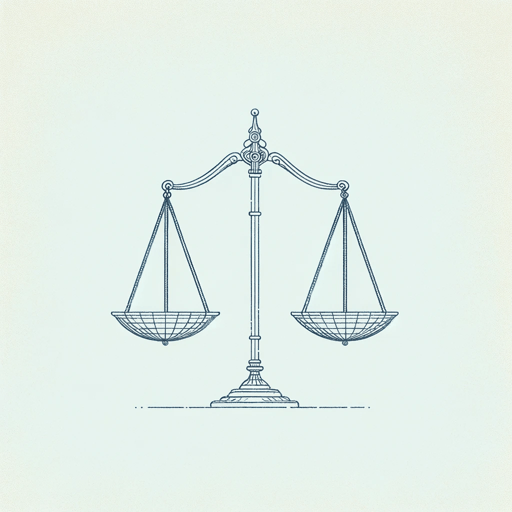20 pages • 40 minutes read
William ShakespeareSonnet 60
Fiction | Poem | Adult | Published in 1609A modern alternative to SparkNotes and CliffsNotes, SuperSummary offers high-quality Study Guides with detailed chapter summaries and analysis of major themes, characters, and more.
Summary and Study Guide
Overview
Though widely regarded as history’s finest and most prolific English playwright, William Shakespeare also wrote poetry, the most famous among these works being his sonnet cycle. Shakespeare wrote 154 sonnets (14-line rhyming poems that contain a volta, or turn of thought) through the 1590s and beyond, and the poems—bookended by a longer verse, “A Lover’s Complaint”—were first published in a quarto volume called “Shakes-Speares Sonnets” (a quarto being a book format where four pages were printed on each side of a sheet of paper, front and back; through folding the sheet twice, eight pages ended up printed on one sheet of paper). The sonnets of the quarto are considered a cycle, or a sequence, since they share common themes and imagery.
“Sonnet 60” is counted as one of Shakespeare's finest and most complex poems, as well as an illustrative example of an English sonnet. Through a series of distinct similes and metaphors, “Sonnet 60” explores the speaker’s anxiety about mortality and aging, and resolves this fear in the ending couplet. This particular sonnet is regarded as a great example of the English form because it uses each of its three quatrains (four-line stanzas) to present different imagery. It also uses the couplet to provide a swift twist. The English sonnet is divided in three four-line stanzas (quatrains) and a two-line couplet, in a departure from its precursor, the Petrarchan or Italian sonnet, which is divided in one eight-line stanza (octet) and one six-line sestet.
Poet Biography
William Shakespeare’s actual birthdate is unknown, but records show he was baptized when a few days old on April 26, 1564, in the town of Stratford-upon-Avon in England. The eldest surviving child of John and Mary Shakespeare, a couple on the rise in society, William likely attended the local grammar school and studied the Latin classics. He moved out of his family home at the age of 18 to marry Anne Hathaway. Their first child, Susanna, was born soon after, followed by the twins Judith and Hamnet. Hamnet, the couple’s only son, died at 11 in 1596.
Not much is known about the intervening years between the birth of his children and Shakespeare’s move to London and his rise on the London literary scene, but by 1592 he had begun to be regarded as a significant poet and playwright. The famous long poems “Venus and Adonis” (1593) and “The Rape of Lucrece” (1594) made his name, and soon he became a founding member of The Lord Chamberlain’s Men, a company of actors. As the company’s regular dramatist, Shakespeare produced two plays a year on average for nearly two decades. Some of these plays were comedies like The Taming of the Shrew (1594) and Much Ado about Nothing (1598-99), and great tragedies like Hamlet (1600-01) and King Lear (1606). In 1599, Shakespeare contributed some of his earnings to build the Globe Theatre, in which his plays thereafter were performed. After James I succeeded Queen Elizabeth in 1603, the company became The King’s Men. Under the patronage of the king, Shakespeare wrote his most famous tragedies, including King Lear (1606) and Macbeth (1606-07).
Shakespeare wrote 38 plays, divided (retrospectively) as comedies, tragedies, history plays, and romances, as well as 154 sonnets and many other poems. Though he was an immensely successful playwright in his day, Shakespeare—like many of his peers—regarded poetry as more serious and enduring work that would make his name in literary history. It is therefore no coincidence that Shakespeare’s sonnets so often explore the problem of mortality and locate its resolution in the permanence of art.
While Shakespeare thrived professionally in London, his home life was always centered around Stratford, where he had built the family estate, New Place (now maintained as a public garden), in 1597. It was in Stratford that Shakespeare died at the age of 52 on April 23, 1616. Biographers have noted that his date of death fell close to his birthday. The cause of Shakespeare’s death is unknown, though apocryphal (and uncorroborated) legend says he died after a session of heavy drinking with fellow writers Ben Jonson and Michael Drayton. At the time of Shakespeare’s death, only 17 of his plays had been printed, many of them in poor or lost quarto editions. In 1623, John Heminges and Henry Condell—actors in Shakespeare’s company—published 36 of his plays in a durable format. The volume, known as the First Folio, is considered an extremely important book in literary history, as it preserved Shakespeare’s plays for future generations.
Poem Text
Shakespeare, William. “Sonnet 60.” 2019. Poetry Foundation.
Summary
The first-person speaker compares the minutes of human life to waves crashing against a rocky shore. Just like a wave meets land only to be replaced by another, so does a moment of time replace its predecessor. The motion of the waves and the minutes is relentless and repetitive, always moving forward. Yet the motion ends in futility, since all moments are destined to die against the shore of time.
The speaker then compares a human life to the motion of the sun during a day. Childhood is the first light of the rising sun, and maturity its crowning glory, its high noon. As soon as the sun is at the peak of the sky, it begins to be attacked by eclipses and approaching nightfall. It is at this peak that time begins to take away from the day the gift it granted, the gift of light.
Similarly, time decorates youth with the flourish of unblemished beauty. Once this beauty peaks, time begins withdrawing it by scoring or digging “parallels” (Line 10), or wrinkles, on the smooth forehead of youth. Time spares no one, consuming even the rarest or best of humanity. Nature’s truth becomes obvious, that time will cut down even the parallels it planted. Nothing can stand in the way of time and death’s approaching scythe, or reaping tool. Yet, the speaker hopes that he can resist time through his poem. The young man to whom the poem is addressed is immortalized in the speaker’s verse, and thus his beauty will outlive time’s cruel hand.
Related Titles
By William Shakespeare

All's Well That Ends Well
William Shakespeare

A Midsummer Night's Dream
William Shakespeare

Antony and Cleopatra
William Shakespeare

As You Like It
William Shakespeare

Coriolanus
William Shakespeare

Cymbeline
William Shakespeare

Hamlet
William Shakespeare

Henry IV, Part 1
William Shakespeare

Henry IV, Part 2
William Shakespeare

Henry V
William Shakespeare

Henry VIII
William Shakespeare

Henry VI, Part 1
William Shakespeare

Henry VI, Part 3
William Shakespeare

Julius Caesar
William Shakespeare

King John
William Shakespeare

King Lear
William Shakespeare

Love's Labour's Lost
William Shakespeare

Macbeth
William Shakespeare

Measure For Measure
William Shakespeare

Much Ado About Nothing
William Shakespeare

